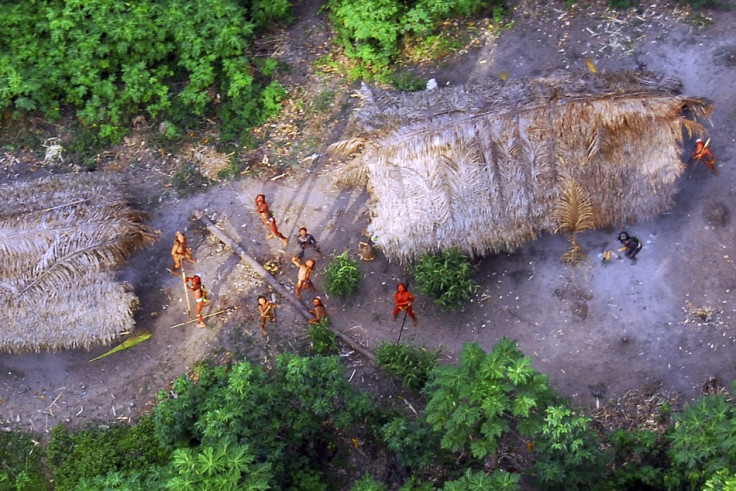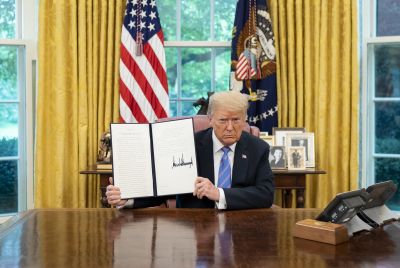New uncontacted tribe discovered in Brazil needs to be protected from outsiders, scientists warn

Officials from Brazil's Indian affairs agency, FUNAI, have confirmed the existence of more than two dozen 'uncontacted' tribes within previously unknown indigenous group in the rugged folds of the western Amazon.
Brazilian Authorities say the remote group likely numbers around 200 members, living in traditionally built huts, called malocas, surrounded by small farms of nuts, banana, and corn.
According to the National Indian Foundation, (FUNAI), a government organization aimed at preserving the rights of the indigenous, researchers first became aware of the possible existence of an uncontacted tribe after finding several small gaps in the forest while reviewing satellite imagery of the Javari Valley in the western Amazon, near Brazil's border with Peru.
In April, an overflight examination of the region confirmed the presence a settlement composed of three cleared agricultural areas and four malocas.
The expedition coordinator Fabricio Amorim says that confirming such discoveries requires years of careful research, following guidelines geared towards protecting uncontacted tribes.
From the flyover photographs, FUNAI has been able to make certain determinations about the mysterious and remote settlement.
"The crops as well as the malocas are new, dated within a year. The state of straw used in the construction, and size of the corn indicate [its age]. Besides corn, there was a banana and undergrowth that appeared to be peanuts, among other crops," says Amorim in a statement released by FUNAI.
However as Amorim explained, despite the settlement's geographic isolation, these indigenous peoples are not entirely protected from outside activities.
"The main threats to the integrity of these groups are illegal fishing, hunting, logging, mining, agro-pastoralists with large clearings, missionary activities and frontier situations, such as drug trafficking," says Amorim. "Another situation that requires care is the oil exploration in Peru, which could have an impact on Javari Valley."
Around 2,000 uncontacted Indians are said to be in the Javari valley and according to National Geographic the Javari Valley is a dense rain forest area, half the size of Florida.
However, most of the uncontacted Indian tribes fall victims to diseases communicated through contact with outsiders.
Survival International reported that hunter-gatherer nomadic groups known as "Maku" who dwell in headwaters of the northwest Amazon basin have been hit with a respiratory disease. Around 35 Nukak-Maku have been admitted to San José del Guaviare hospital in the southern Colombian Amazon. Most of the tribe members have been living in refugee camps outside San José since being ousted from their rainforest abode by guerrilla armies.
The tribe emerged from the forests in 1988 and since then half of the tribe members have lost their lives.
In order to protect and preserve the newly discovered tribe, FUNAI has thus insisted it does not plan on releasing the specifics as to its location in a region home to approximately 14 other uncontacted tribes accounted for so far.
© Copyright IBTimes 2025. All rights reserved.





















